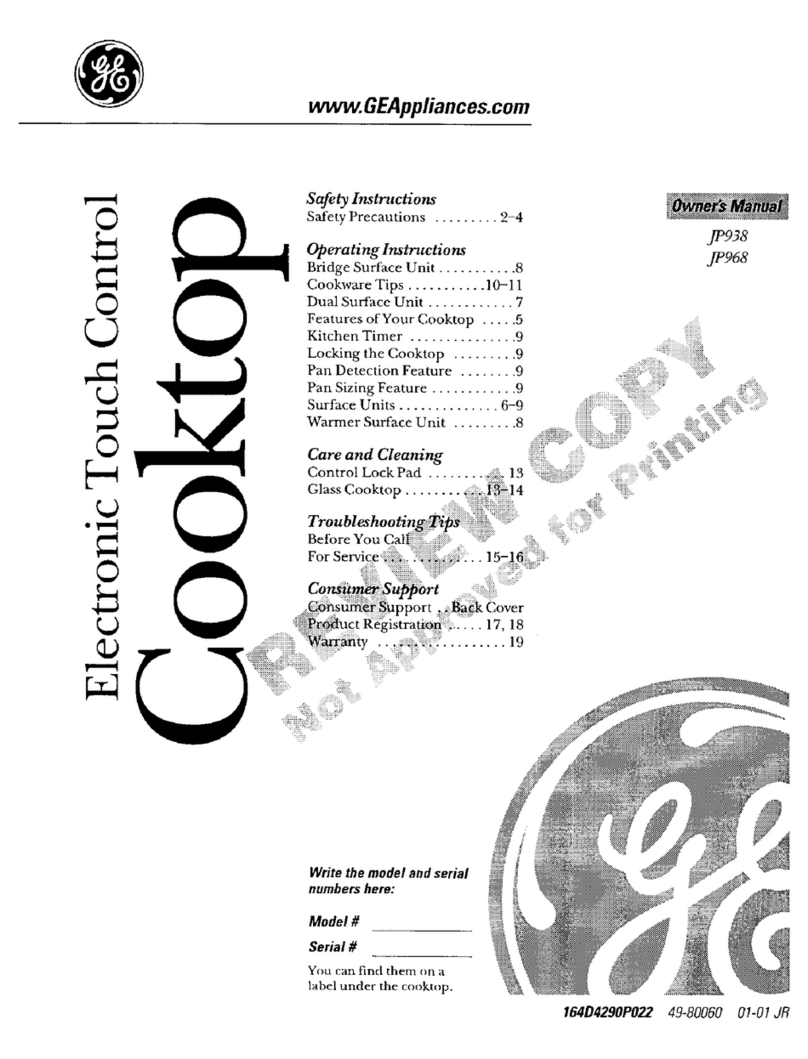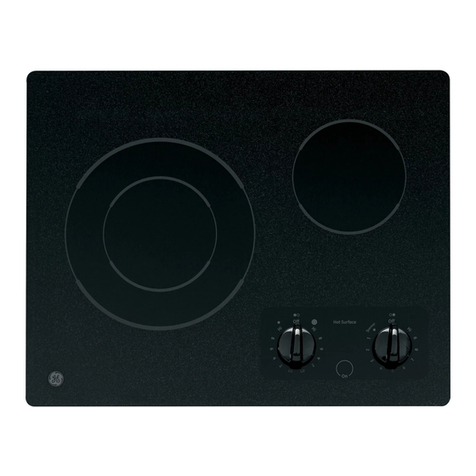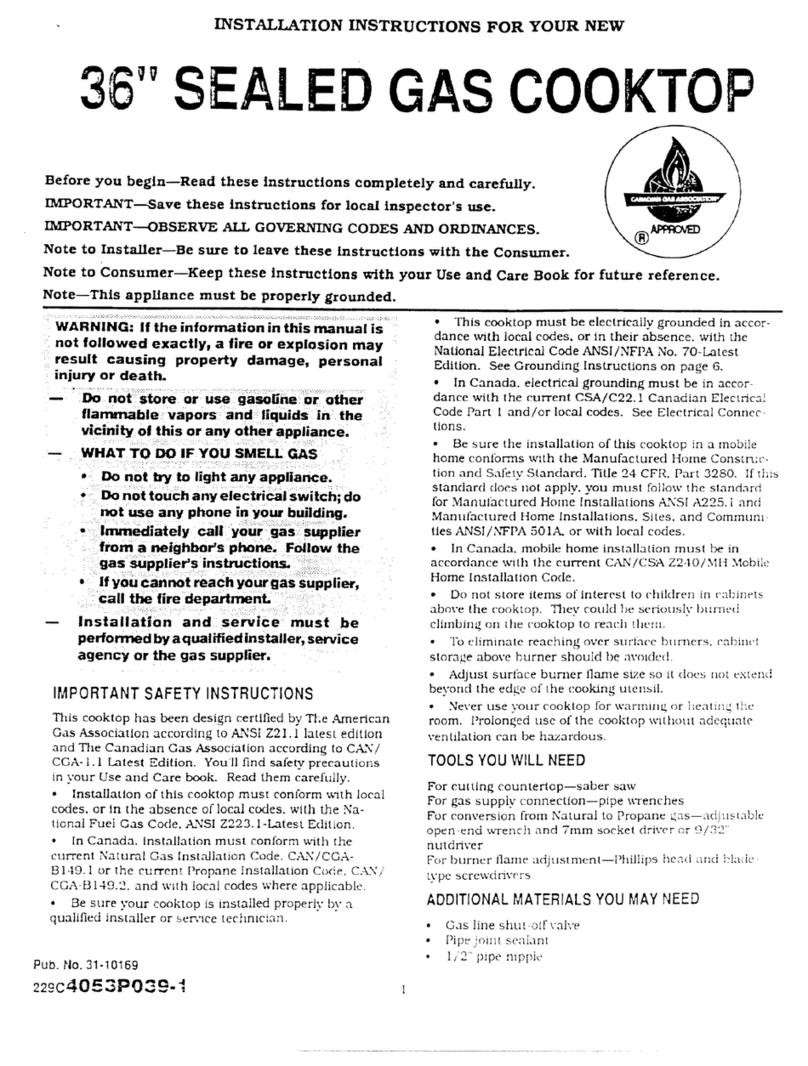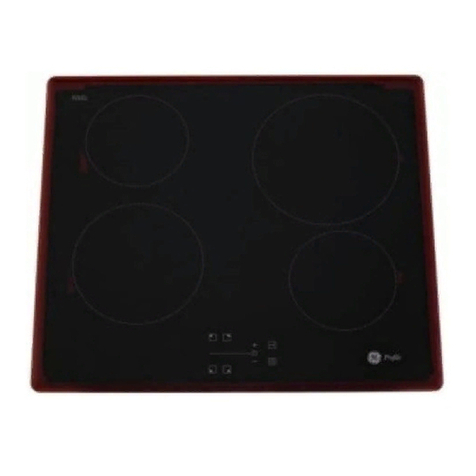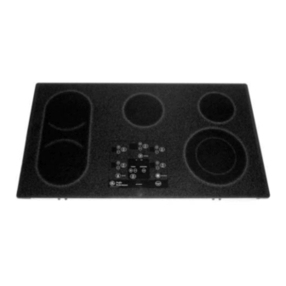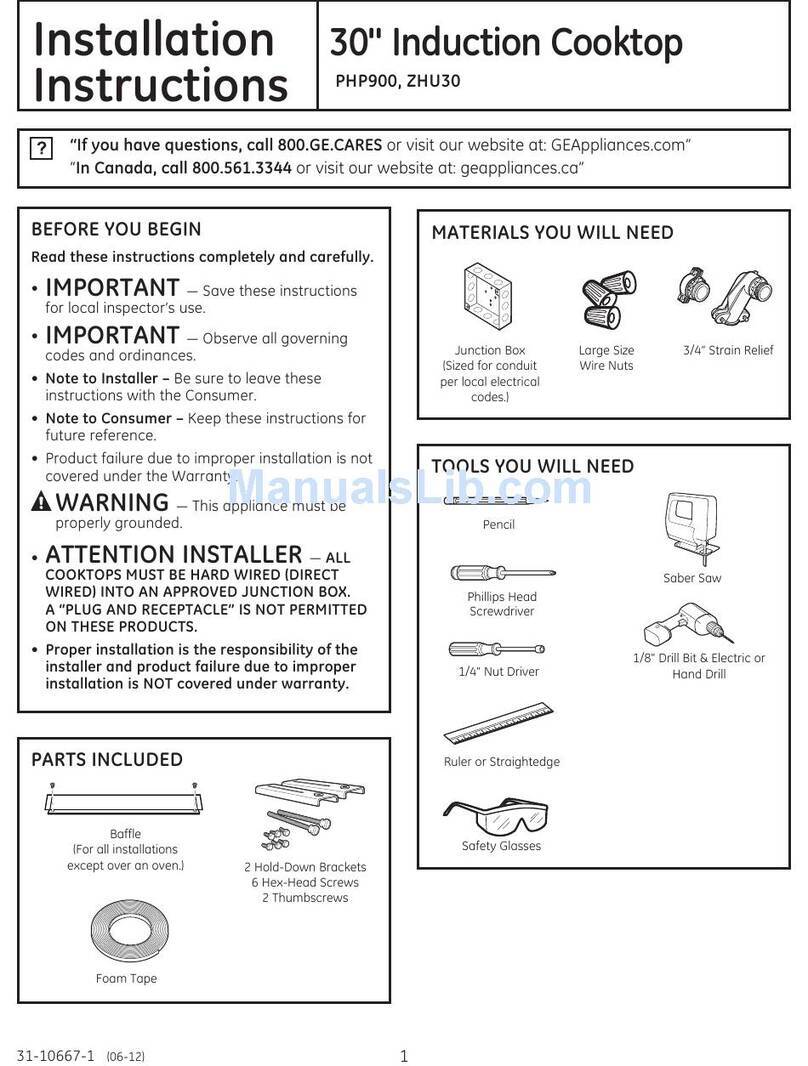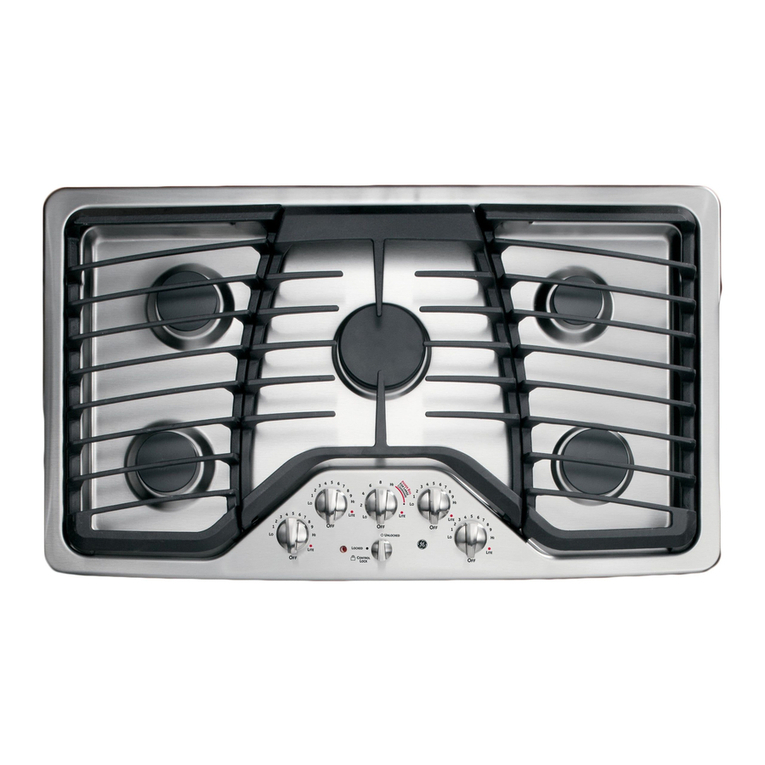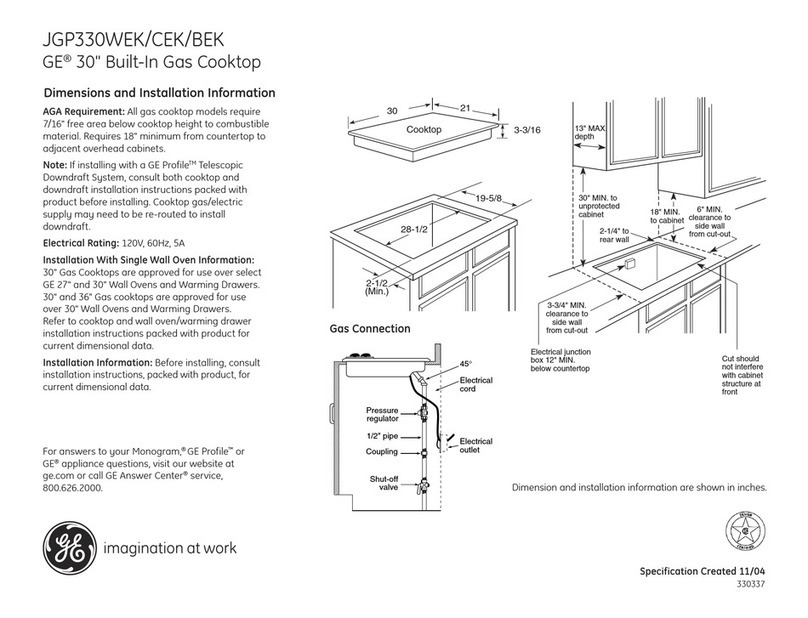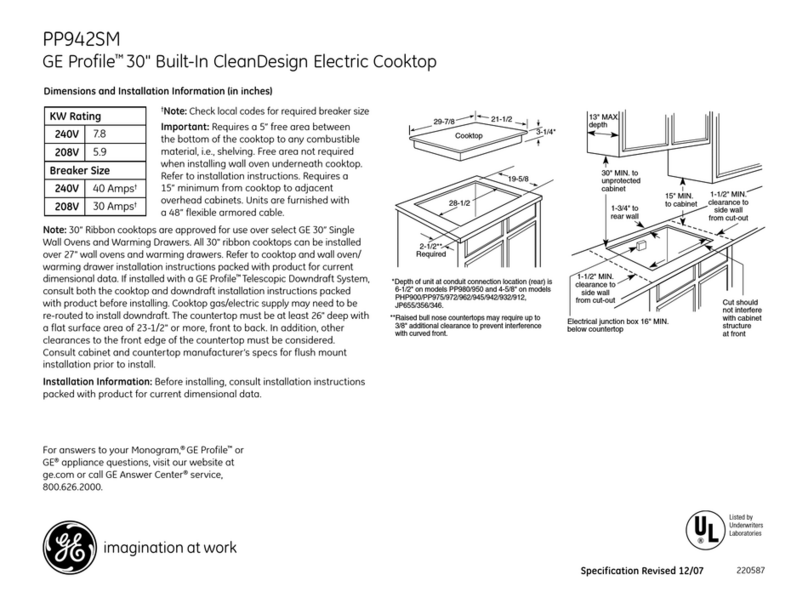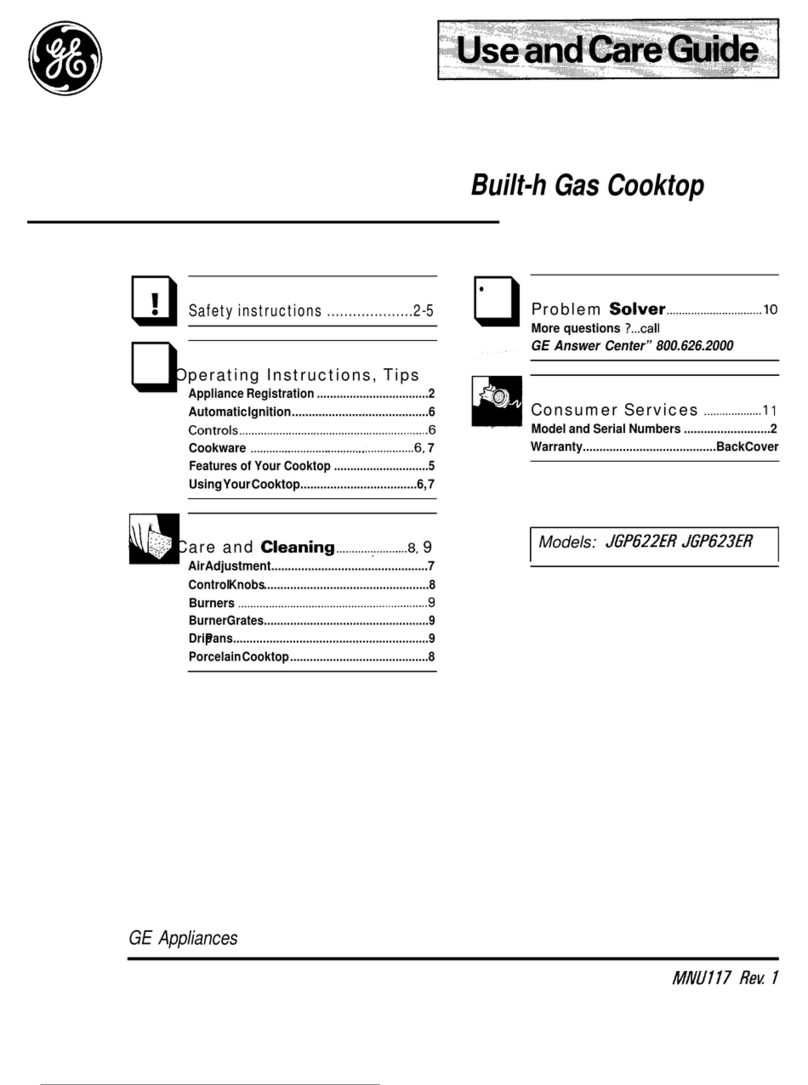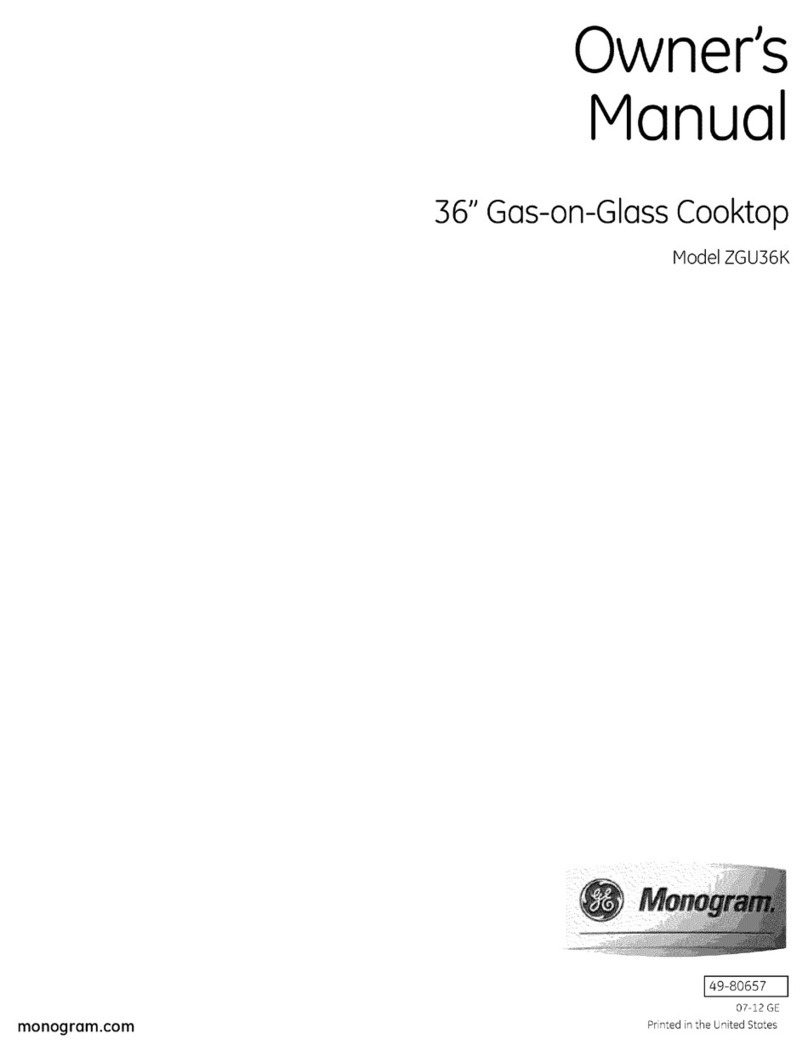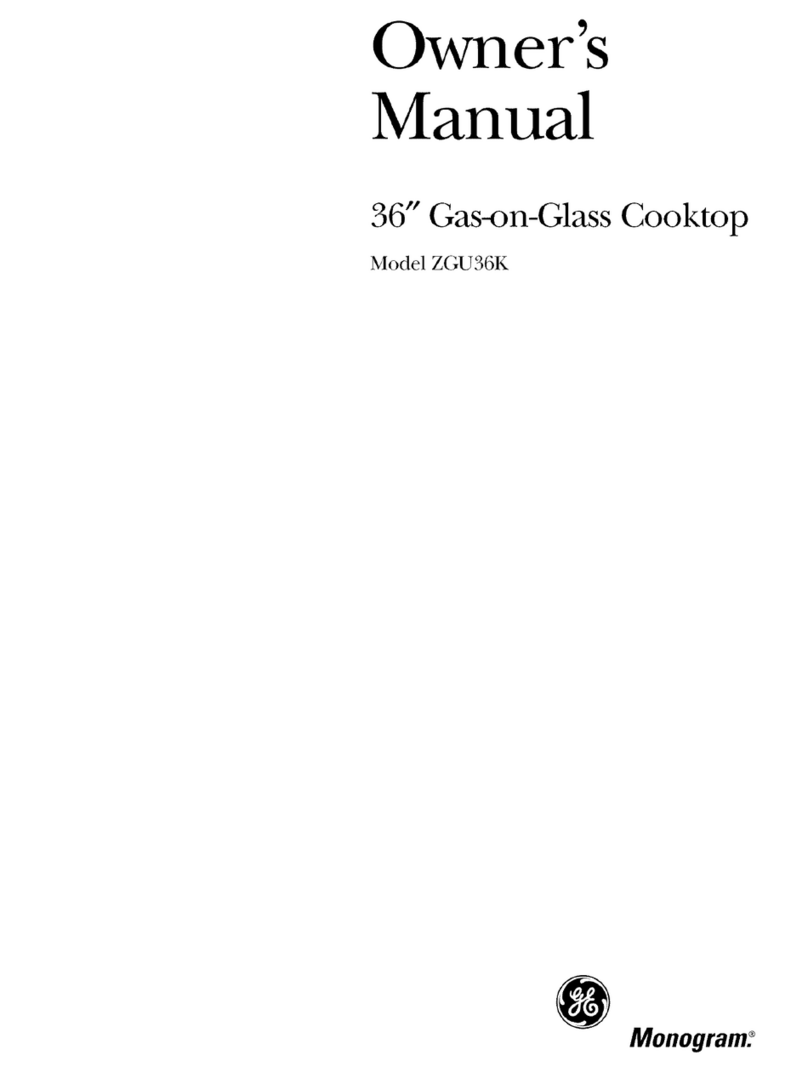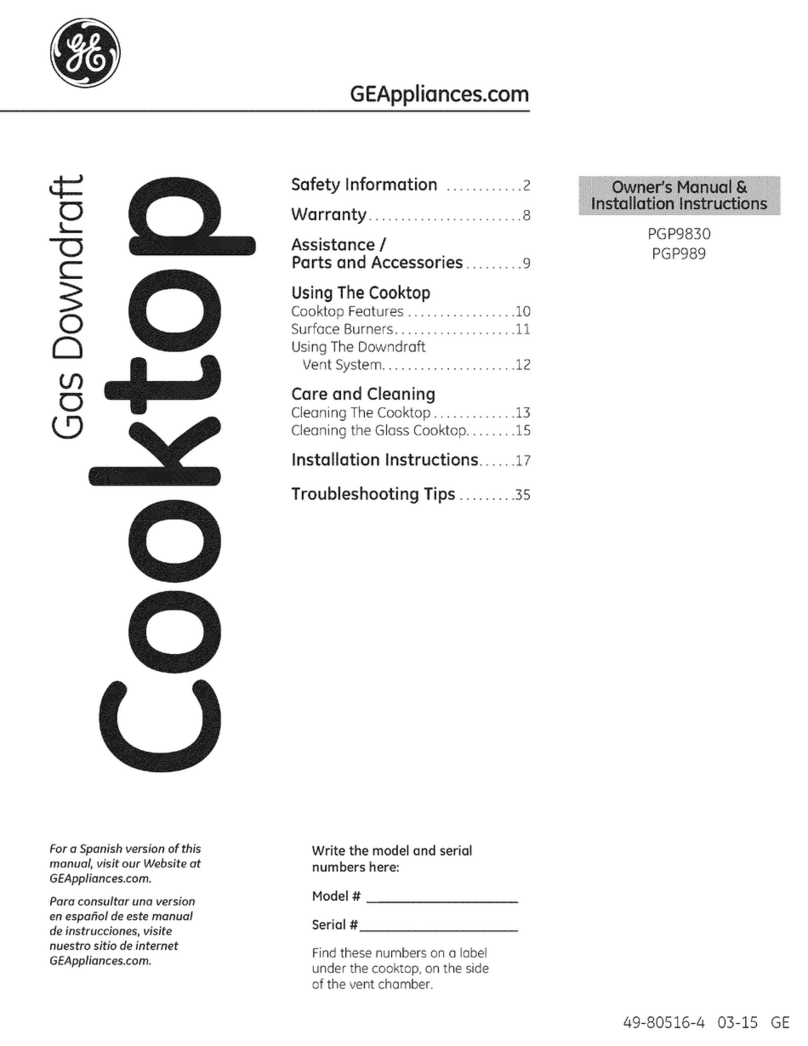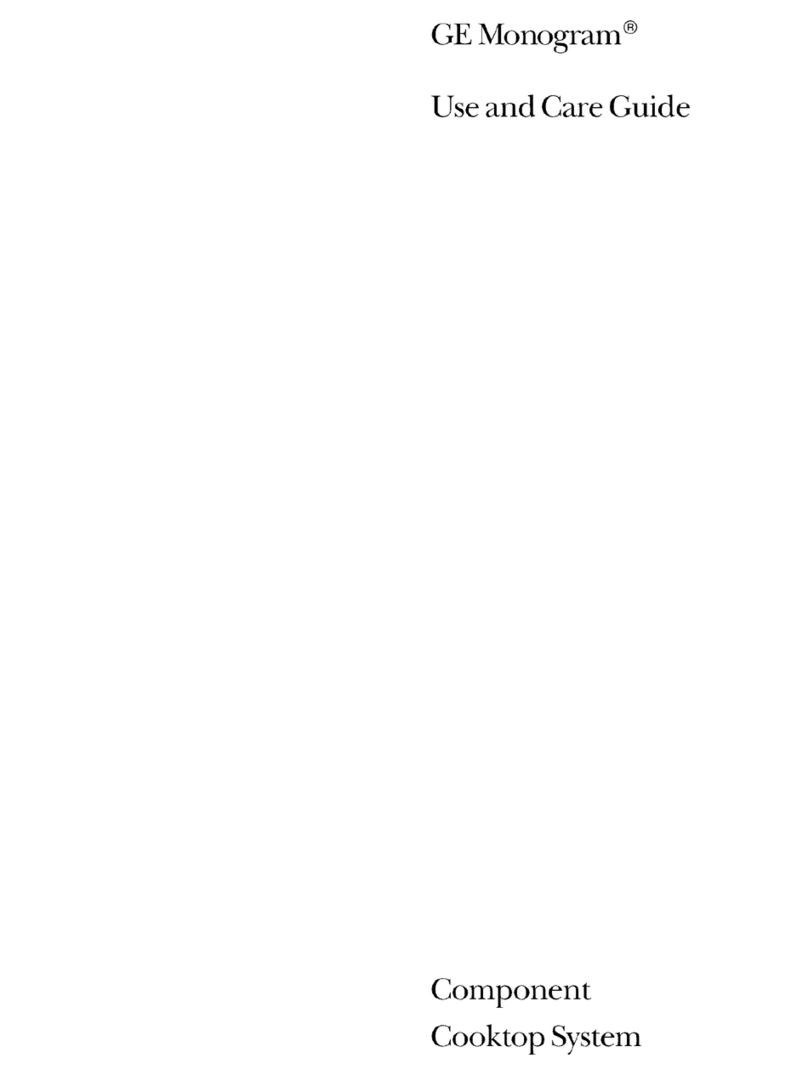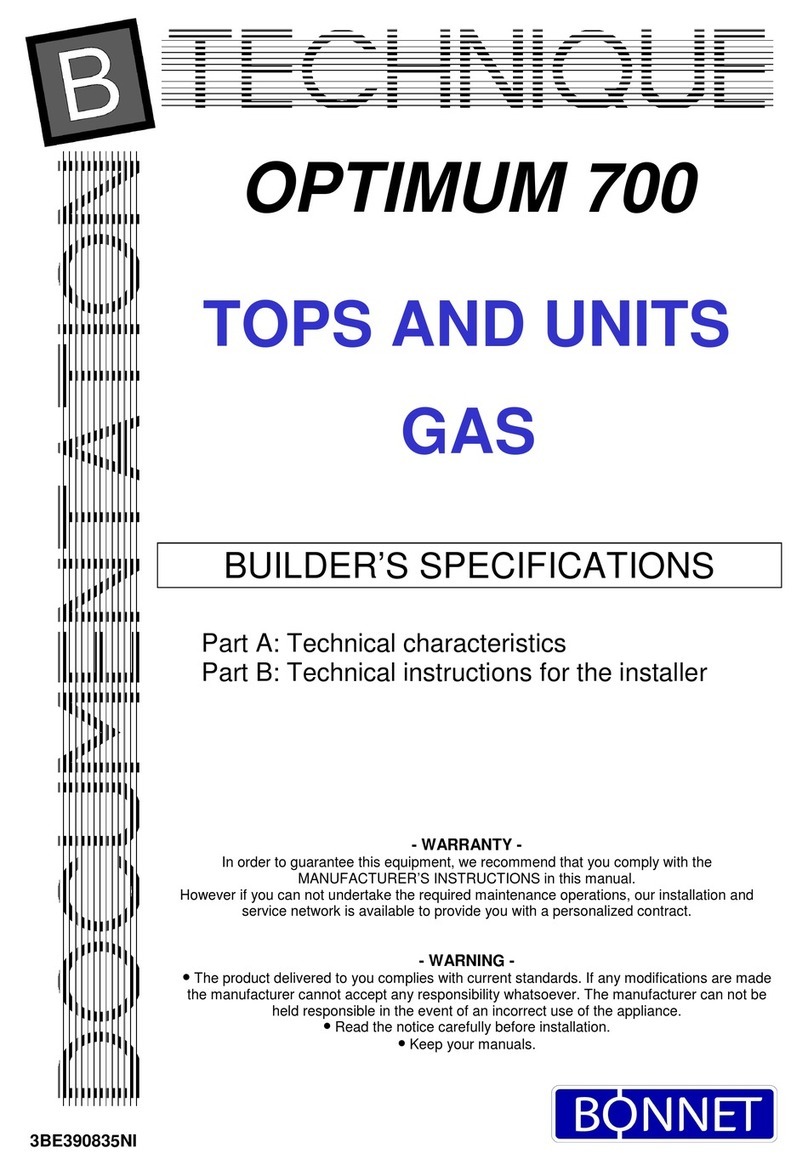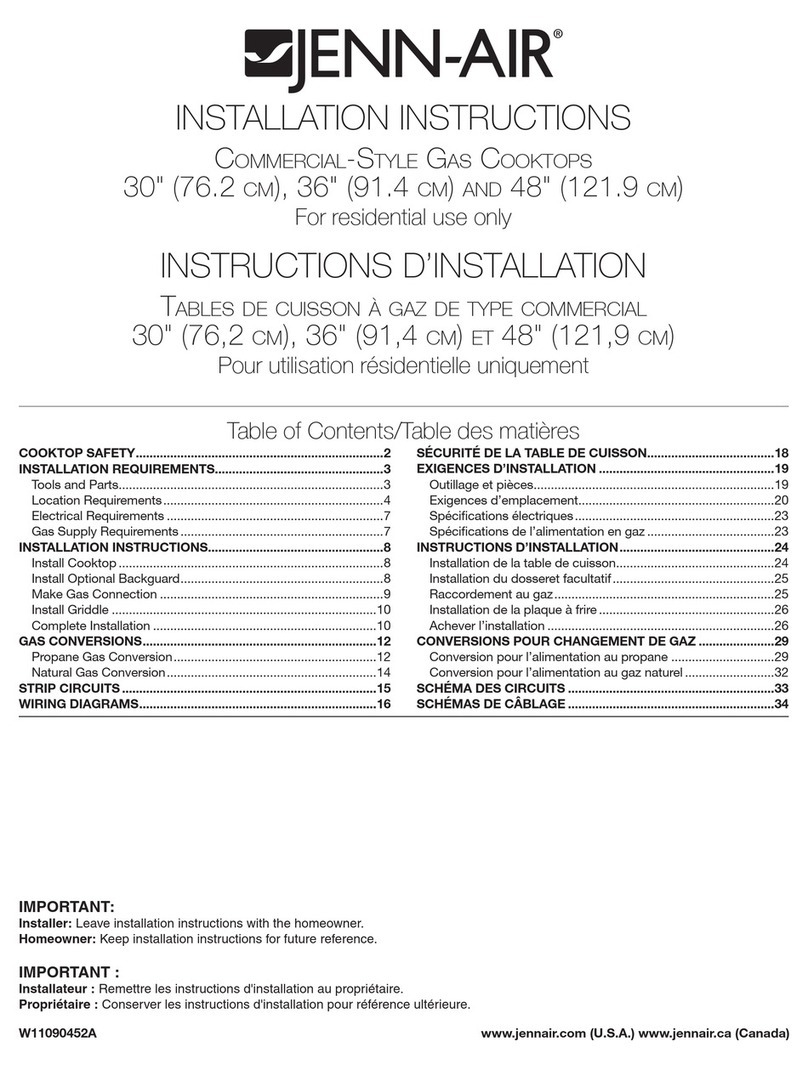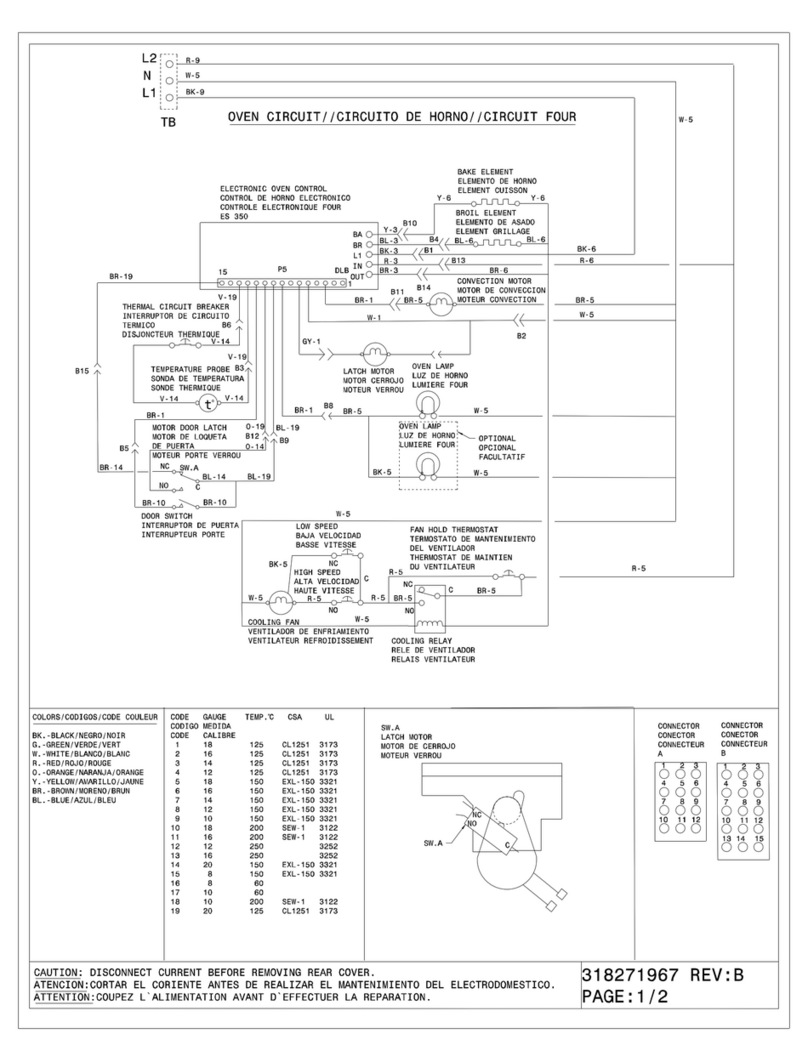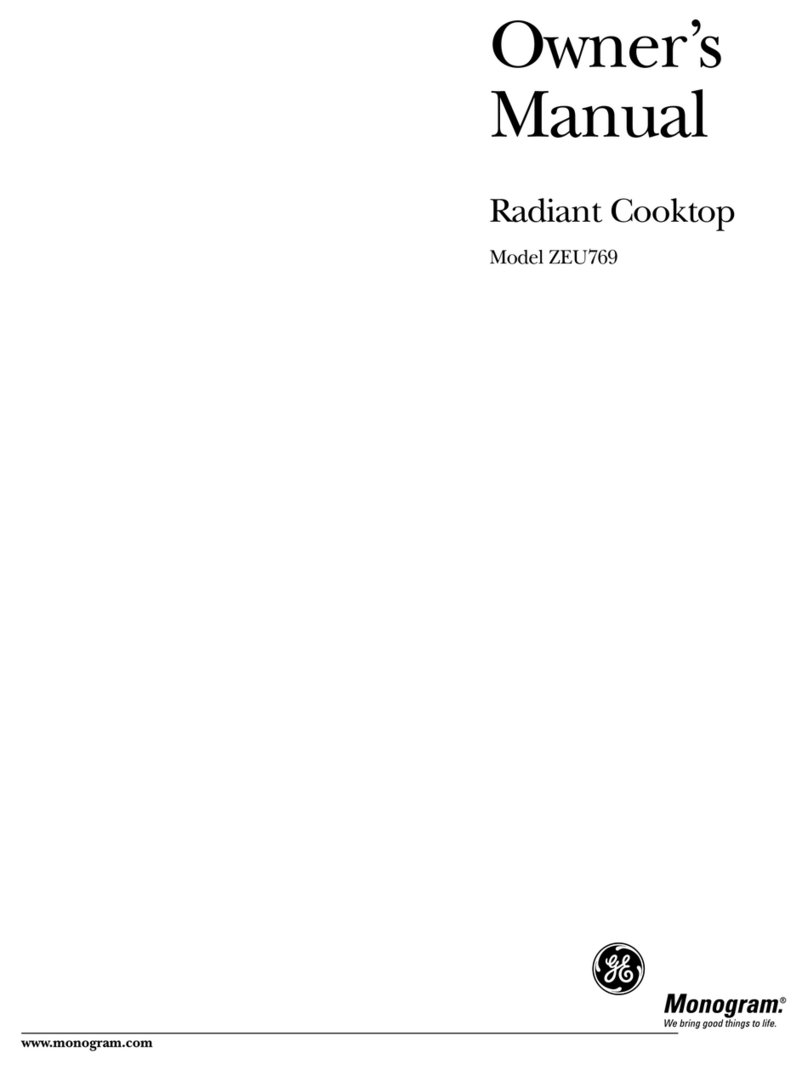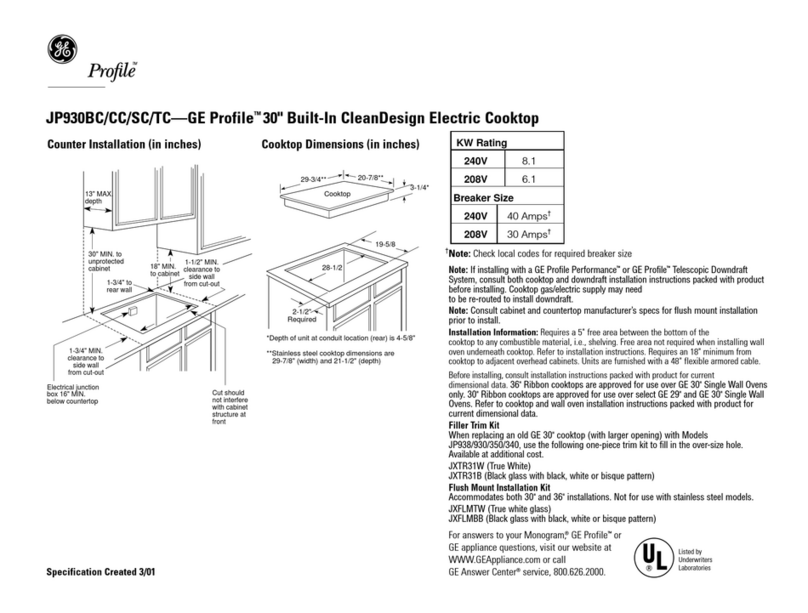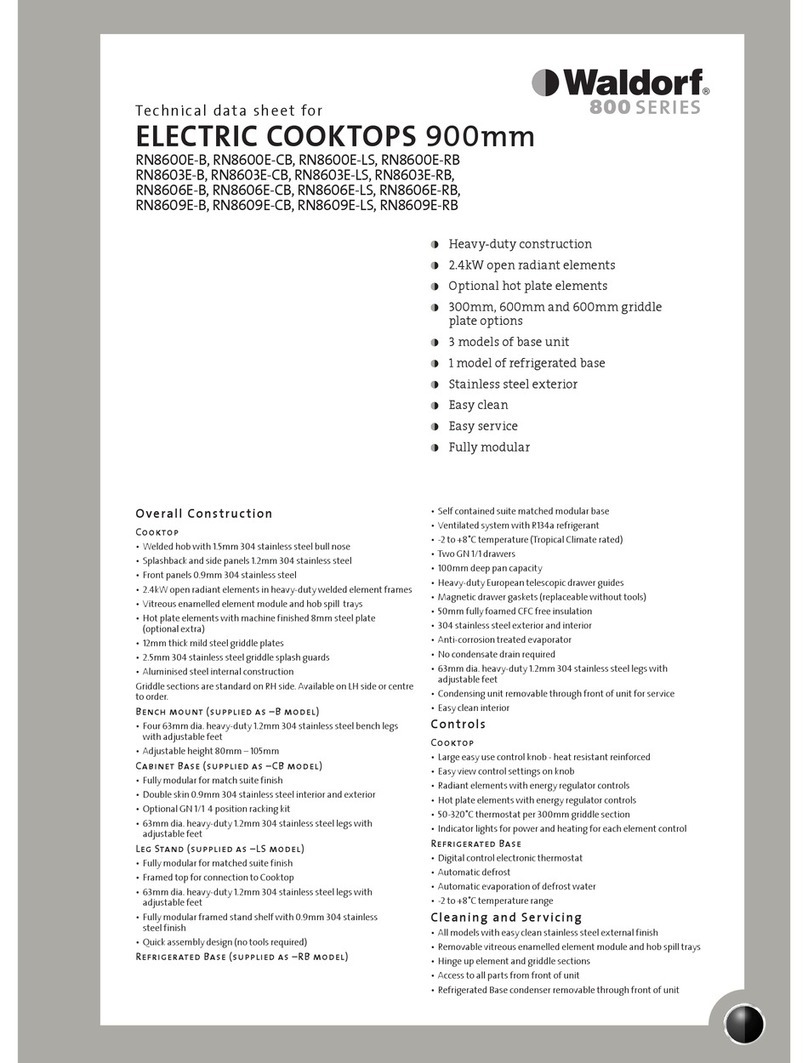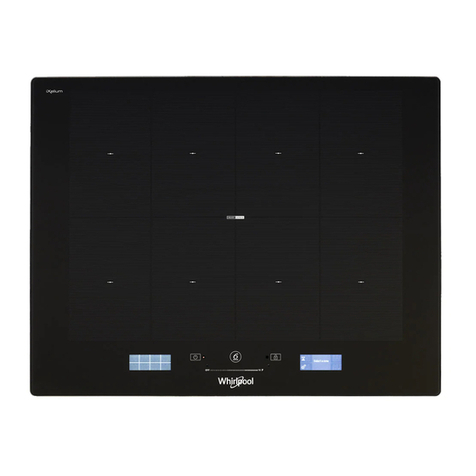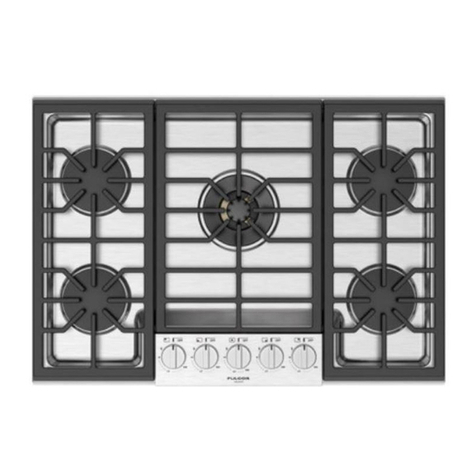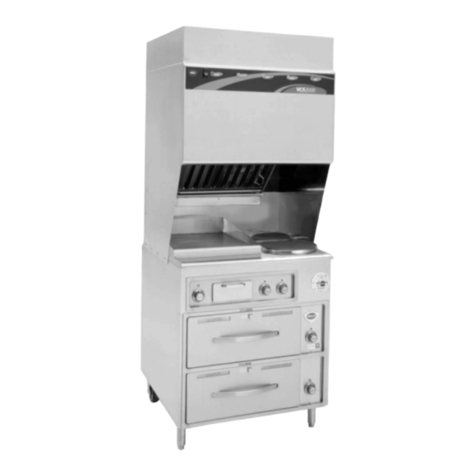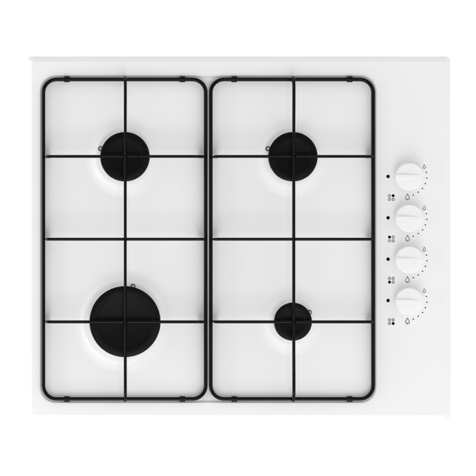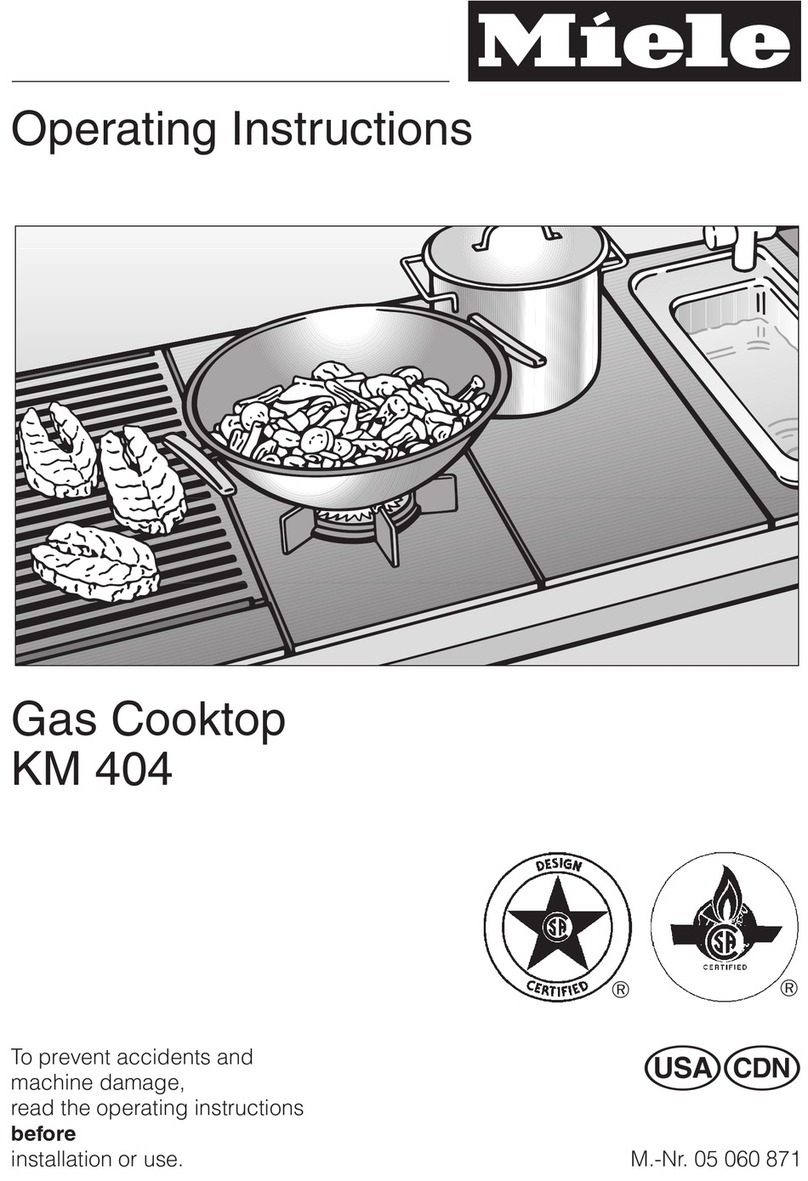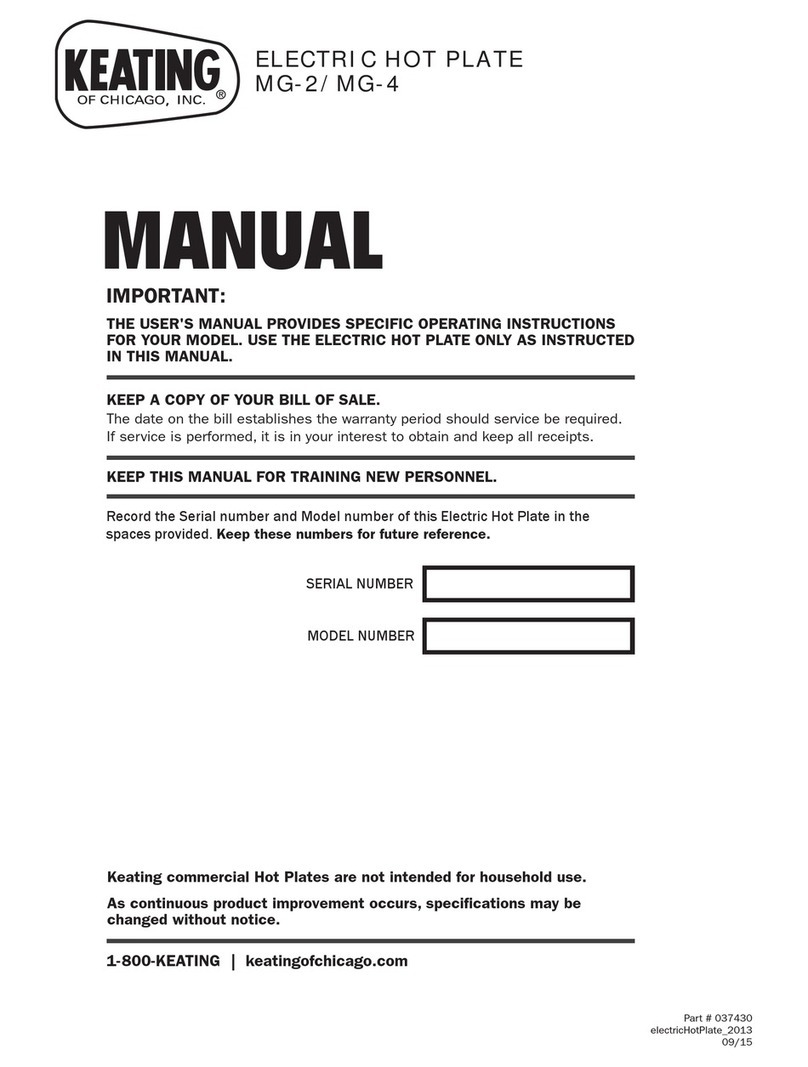
Cookwareto Use
&
Jseof propercookware is vital to
operationof yourinduction
oktop, Onlypots and pansof
ferrousmetal,suchas ironor steel,
canbe used. Cookwaremadeof
othermaterials,suchas aluminum
or glass/ceramicis not suitable.
++
---$+*
Youwillprobably find that some of
yourcookware willgivegood results
on the induction cooktop. Test
cookware by placing amagnet on
it. If the magnet sticks, the cook-
ware willprobably work on your
Cooktop.
With your induction unit at home,
you can check apan by simply
turning the unit on and placing the
pan on the unit. If it isan induc-
tion type pan, it willbe attracted to
@surface unit, and there willbe a
ht “clicking”noise when the pan
is placed on the unit. If pan isdry,
it willheat injust seconds, or check
heating with asmall amount of
water. It should begin to steam very
rapidly. If it isnot magnetic,the con-
trol display willflash on and off.
bok For:
Magnetic stainless steel, cast iron,
enameled steel, and combinations
of these materials.
Do Not use:
Aluminum or aluminum clad
cookware, copper or copper clad,
aluminum foil, glass/ceramic -
kware, some stainless steel
ch does not attract magnets.
[r A
Alwaysuse containers designed for
surface cooking. Lightweightpans
heat and cool rapidly, though they
may not heat as evenly. Useyour
lighter weightcookware when
speed isdesirable, such as when
boilingwater. Do not useextremely
thin pans. For cooking tasks such
as frying bacon, pancakes or other
foods where small amounts of fat
are used in the pan, use heavier
pans which distribute heat more
uniformly, for more even cooking
and lesschance of scorching. Heavy
weight(3-ply)stainlesssteel has
been found, to achieve best cooking
results with the induction cooktop.
Neverusealuminumfoil oralum-
inumpackaging.Do not attempt to
cook foods in an unopened can or
sealed container; building pressure
could burst the container, causing
injury.
Best resultsare achieved with
round pans. Square or rectangular
pans do not heat uniformly. Match
sizeof pan to cooking area as
closelyas possible. Do not use a
pan lessthan 4“across the bottom.
Do not use apan so large that it
covers more than one cooking area.
The bottom of the pan need not be
perfectlyflat. Pans with rims or
ridges-areacceptable.
The list of cookware (on page 12)
which may be used with Induction
Cooktops is based on actual heating
and cooking tests. There are many
sizesand types of cookware repre-
sented here, but use this list only as
astarter. More and more types of
stainlessand carbon steelcook-
ware, especially,are becoming
available. The chart listsavariety
of types and sizesof cookware
made by the brands tested. Not all
sizesare available in each cookware
line on this list.
Induction
CookingTips
@Stainless steelcookware comes
in avariety of weights. Lightweight
steel cookware works wellfor most
types of boiling, simmering and
sauce making, providing the proper
heat setting is used. However, for
frying or sauteing, heavyweightsteel
skilletswork bestbecausetheyabsorb
and diffuse ~heheat more evenly.
@Enamel coatings on either steei
or cast iron arc attractive and may
be used on the induction unit. Some
steel pans have alayer of aluminum
embedded in the bottom, so check
these especially carefully, using the
magnet test, before you buy. Some
of these can be used with induction
cooking. Others cannot.
@Most sizesof cookware can be
used. However, very small pans
cannot be used. This is because the
cooktop is designed so that it will
not start if very small steel or iron
utensils (less than 4-inchesacross
the bottom) are placed on the
cooking surfaces. This prevents the
induction unit from accidentally
starting if steel spatulas, cooking
spoons, knives and other small
utensils are placed on it when the
unit is on.
@Like conventional rangetop
cooking, large frying pans over
10~-inches are not recommended
for foods which are not stirred or
redistributed in the skillet while
frying. This is because the outer
areas of the skillet develop lessheat
than areas within the smaller
10~+inchdiameter and foods in the
outer area may be undercooked.
Foods which are not stirred or
moved about, likefried eggs, French
toast or pancakes, need askillet no
larger than 10-incheswith either a
conventional or an induction unit.
However, foods which are stirred
like scrambled eggs, or moved
about like fried chicken, can be
cooked successfullyin skillets up to
12-inches(10.5-inchesacross the
bottom) because the heat is being
distributed within the food when
you stir or redistribute while it is
cooking.
—
—--
—
—
—.
—
—
—.
—
—-
—
—
—-
—
—
—
—
—
-
—.
—
-–
—
—
7
